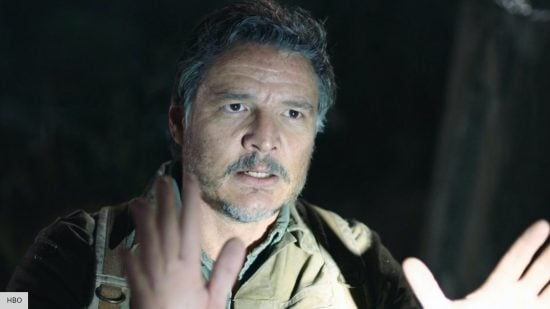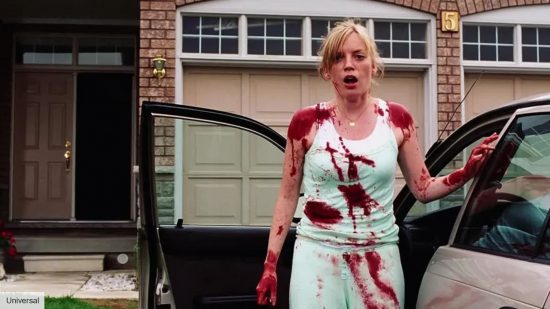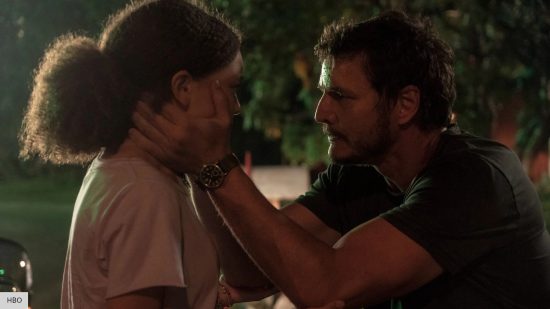There’s nothing quite like the energy of a great outbreak scene in a zombie movie or horror series. The likes of the frenzied army camp meltdown in The Girl with all the Gifts, the opening stretch in George A Romero’s Dawn of the Dead, and The Last of Us TV series present a particular kind of nihilistic thrill, dragging us through bloody chaos and out the other side.
Zack Snyder’s Dawn of the Dead remake is a personal favourite, where Ana (Sarah Polley) goes to sleep as a nurse living in a suburban home, and wakes up in a horror movie. Her husband’s neck is torn open by a feral young neighbour, only for him to rise an enraged animal soon after bleeding out.
Ana runs outside to find the entire world ablaze; people being eaten left and right, smoke plumes billowing through the skyline, and emergency aircraft going every which way. She jumps in her car and – wisely – starts driving without stopping for anyone. The sequence is glorious; sudden, sharp, loud, and visceral.
Snyder has rarely been better since, his complete disregard for subtlety and aptitude for effects-driven mayhem slammed together like a mindless undead and a moving truck. It lingers in the mind during the carnal sprawl seen in the first episode of The Last of Us TV series.
Sarah (Nico Parker), the young daughter to protagonist Joel (Pedro Pascal), goes to return a neighbour’s dog to find that evening’s dinner involved some impromptu cannibalism. Horrified, she backs out to be picked up by her father and uncle Tommy (Gabriel Luna), who beat down the infected and take her in their pick-up truck.
They try to get out of Austin, Texas, but the freeways are jammed. The streets aren’t any better, scores of distressed people trying to find some safe haven. Commercial flights are flying low overhead, one eventually crashes down in the middle of a shopping district, sending cars and bodies flying. Joel’s car is overturned, and Sarah is hurt. He picks her up, but the first alley he brings her down, there are infected gorging themselves on fresh victims.
The Last of Us adaptation, overseen by Craig Mazin and creative director of the horror games Neil Druckmann, sticks close to the original version. Joel and Sarah’s quiet corner of Americana erupts with fire and rage zombies. Before Joel can catch his breath and figure out what to do, Sarah is killed by a soldier who’s been given orders to shoot wanderers on sight in an attempt to contain what’s happening.
Their drive is filmed like a single shot, similar to Alfonso Cuarón’s riveting cinematography in Children of Men. We’re sat among their panic and decision-making, the rising unease and absolute bedlam outside the car windows. If you’ve ever wondered how big an aeroplane actually is, seeing one mere feet overhead from a moving car will tell you.

I can’t say for certain that Naughty Dog’s 2013 videogame was directly inspired by Snyder’s film, but it wouldn’t surprise me. They capture a zombie apocalypse as a swift changing of the tide, a bludgeoning end to the age of man where, seemingly overnight, we’re shoved down the food chain with no hope of coming back.
The 2004 Dawn of the Dead is a raw nerve for the aftermath of 9/11. The sensory overload Ana encounters is synonymous with the anxiety and uncertainty people felt when hearing about the twin towers. That sinking sense of dread and loss, like the world’s changed right from under you.
My school in Ireland held a forum the next day, to explain to us the gravitas of what happened (and to help us understand why it seemed to be the only thing on television), such were the immediate, far reaching shockwaves. The Last of Us is thematically akin, going so far as to have crashed planes as a recurring motif, because subtext is for cowards.
Part of the shock lies in how close to home this is happening. Snyder’s Dawn of the Dead and The Last of Us have the view that nowhere is safe, and nowhere’s ever going to feel safe again. Not to the same degree.
But in that, they attempt a form of catharsis, because to get through pain, you have to first acknowledge it. HBO’s The Last of Us adaptation is arriving a decade after the game’s first release, 19 years after Snyder’s Dawn of the Dead, and 22 years after September 11. Perhaps Joel and Ellie’s arc toward acceptance might push viewers towards the same. I’m not so sure it will, but at least we’re getting some bombastic entertainment in the meantime.
If you’d like more from The Last of Us, we have guides on The Last of Us cast, what’s in the infected’s mouths, and is the Cordyceps start in Jakarta. You can watch The Last of Us on NOW in the UK, and HBO Max in the US.


